Initial Design
My “Pepperland Pinball” machine is inspired by my favorite childhood movie, Yellow Submarine. I was (and still am) a HUGE Beatles fan, ever since my parents played me my first Beatles CD when I was ~3 years old. In middle school, I found a VHS tape of Yellow Submarine at the local thrift store and I was hooked– I watched it religiously after school and I used to keep a tally of how many times I had seen it.
So, I decided to pay tribute to one of my favorite films through my pinball machine.
My design includes locations from the film (like the Sea of Holes and Pepperland), The Beatles in the middle of the machine, and the chief Blue Meanie at the bottom of the machine, menacingly reaching up the playfield. All of the artwork is either adapted from the Yellow Submarine graphic novel (Thank you Professor Jacobs for lending me your copy!) or the film itself.
For 3D elements, I planned on having a ramp connected to a wire spiral on the upper righthand side of the playfield that spirals down “around” a 3D printed yellow submarine and bumpers inspired by the movie’s abstract foliage.
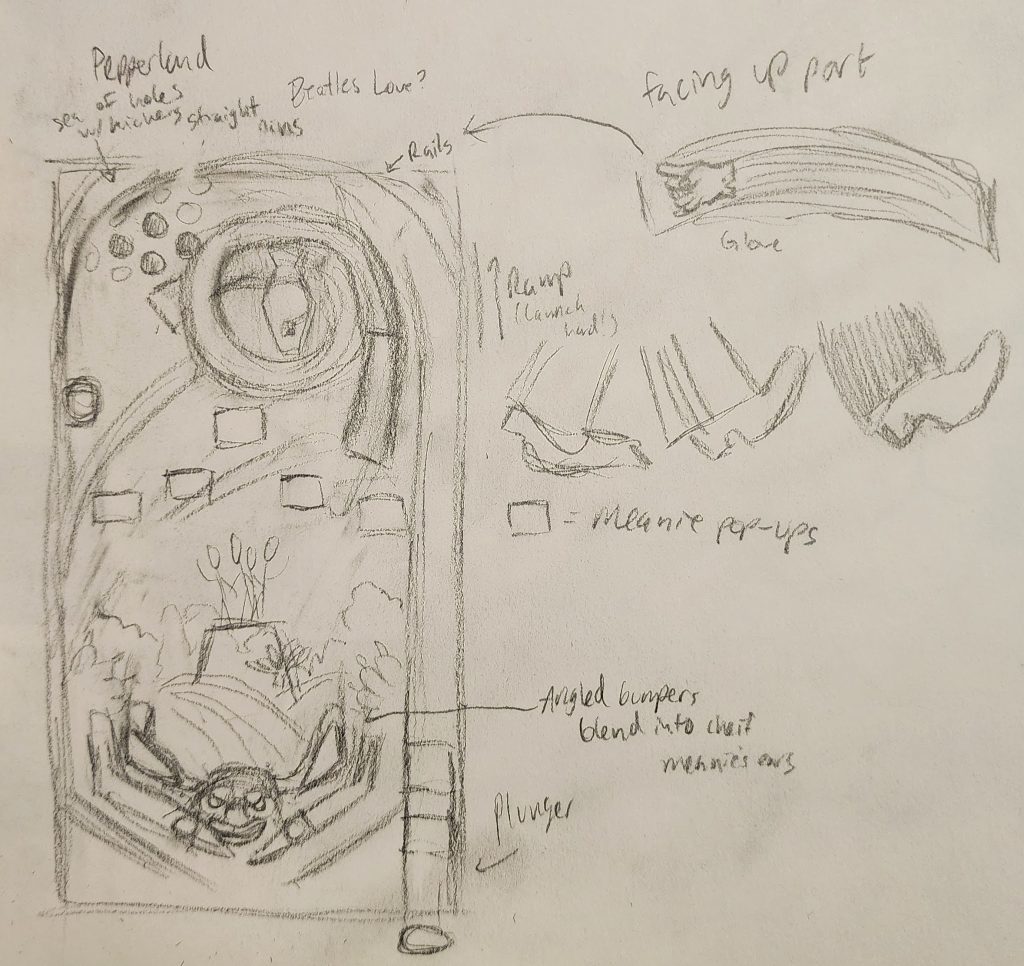

Design Iteration
I started by making a sketched version of the artwork for the playfield and created the 3D elements like the spiral ramp to test where it made the game feel the most fun.
I created the ramp for the spiral out of cardboard, then made the spiral itself out of foam after making a cardboard mockup version. I wanted to make the spiral down out of wire/metal instead of a flat ramp with rails, but it wasn’t holding the shape properly. To keep the marble from flying off the ramp, I added rails out of paper shopping bag handles.
Due to physical limitations, I ended up having the ramp release the pinball behind the spiral rather than to the left of it.
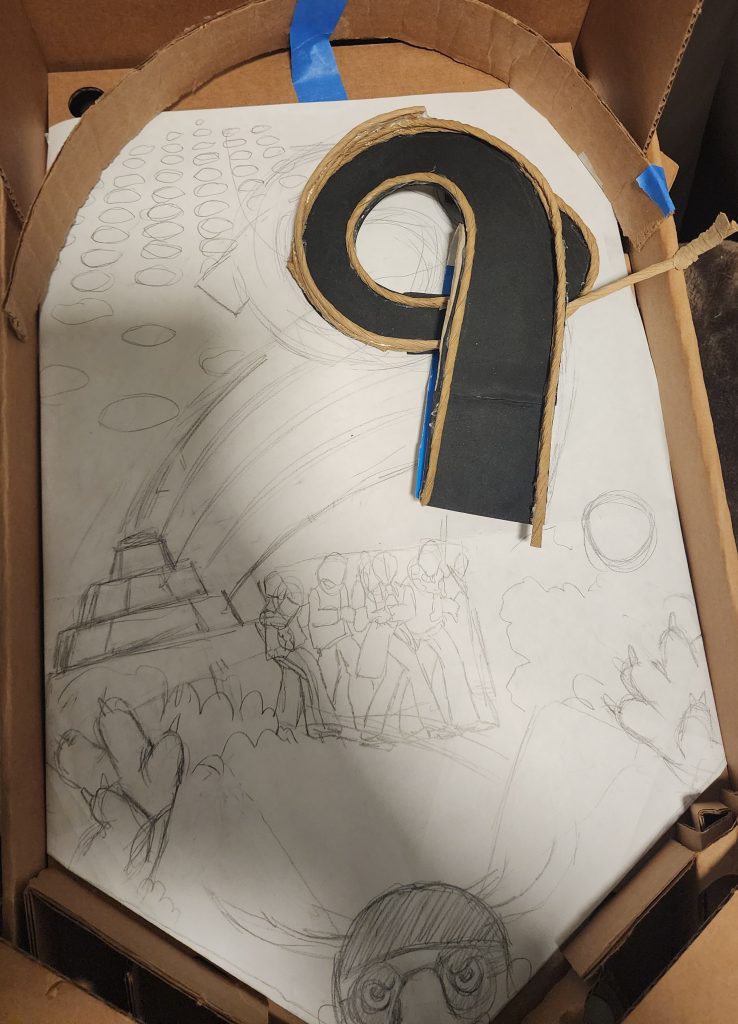
At the same time, I worked on creating the final version of the background used for the playfield (The Blue Meanie’s ears on the cap are part of the 3D triangles to direct the ball toward the flippers). The lighting is different in all three photos, but this shows the progression on the artwork as I was working.
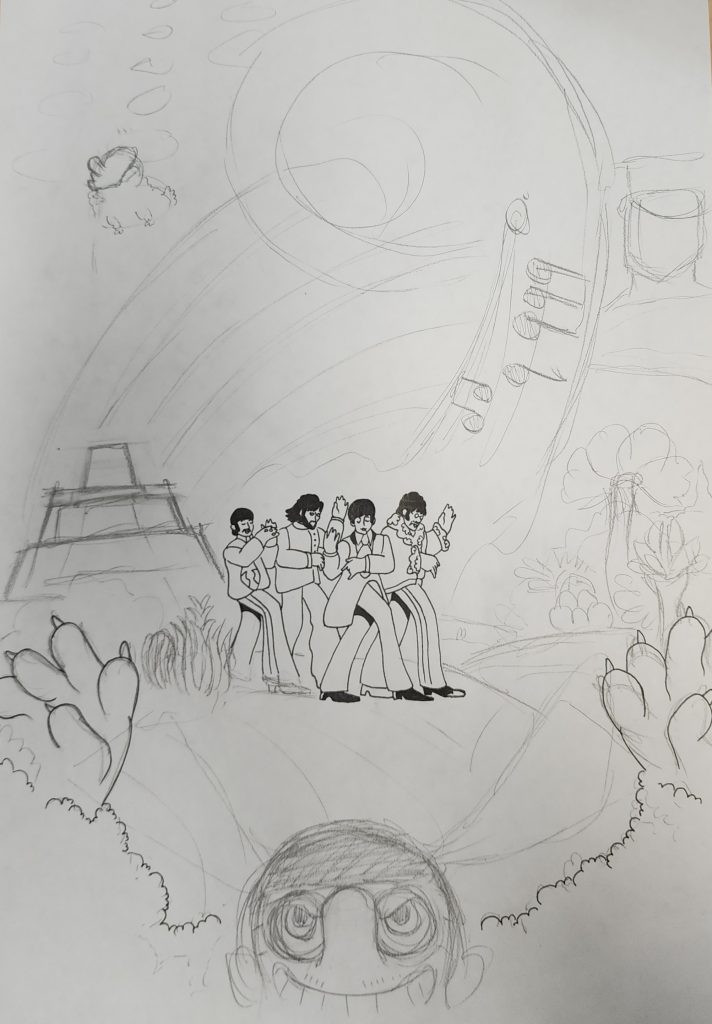

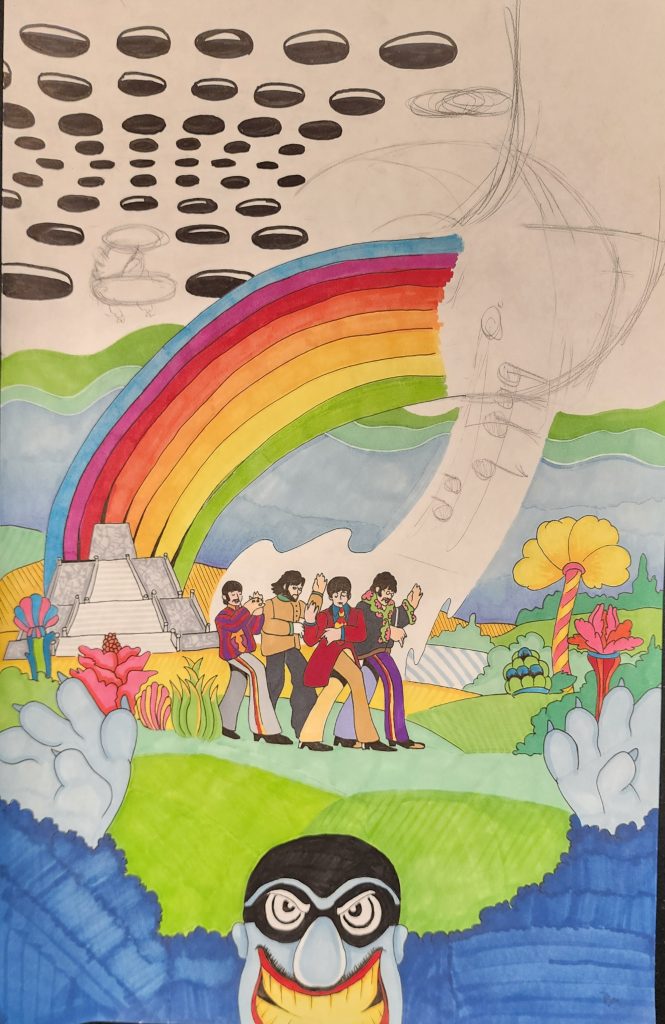
Playtesting and Changes
In contrast with my Bagatelle Wizard Machine, I did not have it ready in time for proper playtesting. I presented a functional version of the machine without the aesthetics completed.
The main feedback that I received was the triangles that guide the ball toward the flippers were too close together (causing the ball to go down the center) and that there were technical difficulties with the spiral (ball would get stuck behind it, ball would get stuck on the ramp, needs another layer of rails in some places). I plan on fixing these as soon as possible, and the playtesters gave me some ideas on how to fix the ramp which I appreciate.
Post-Playtest to Final Version
Due to time, the solutions I tried with the spiral ramp simply were not working, so here’s the last picture of the machine with the full spiral ramp.
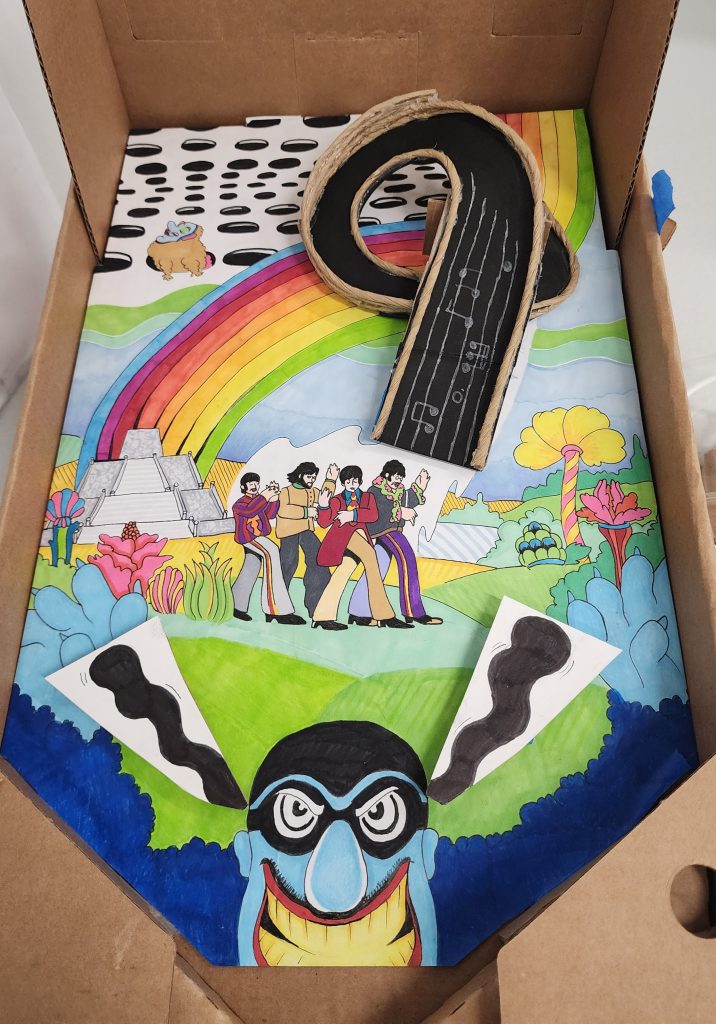
Due to the spiral ramp not working, I ended up having to trim it in order for the ball to be able to make it up the ramp, and not get stuck behind the machine. Instead of releasing the ball behind the ramp, it sends the ball to the “Sea of Holes” in the upper left-hand corner of the playfied.
I added two “bumpers” using straightpins and cardboard circles, as well as two sets of thumbtacks with rubber bands. I also added the design of the flying glove to the curved backboard.
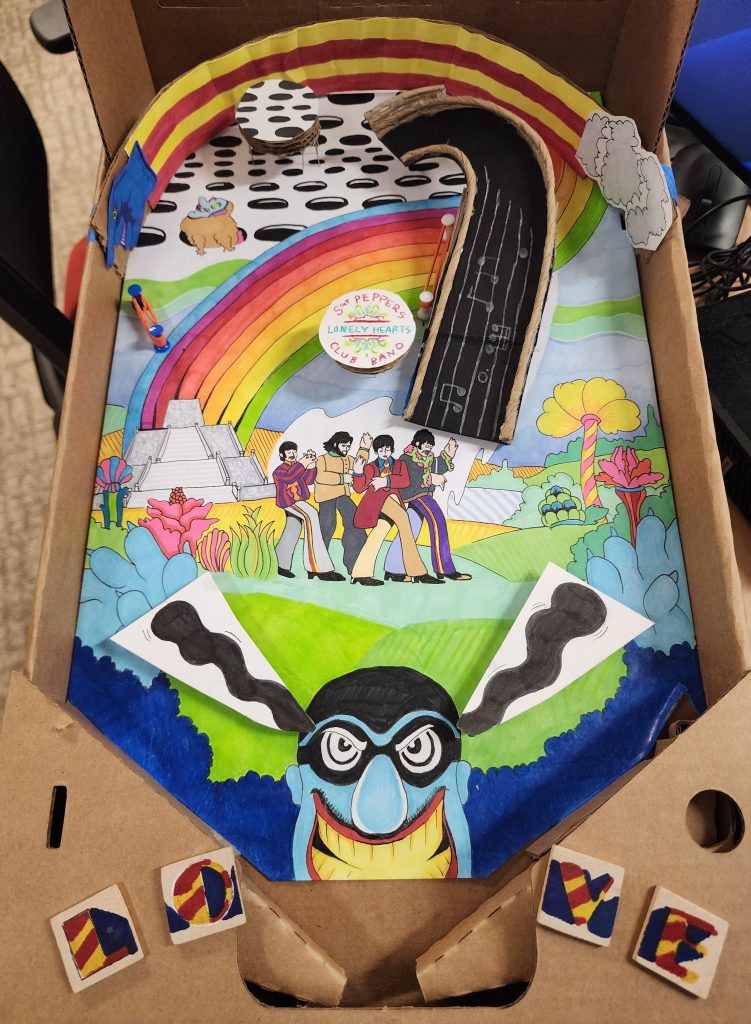

Future Digital Design Version:
I am planning on recreating a lot of the design from the analog to the digital version, with some changes due to the capacity to program the machine. For example, my stretch goal is having a “march of the meanies” minigame where targets pop up out of the ground of the machine, and you have to hit them all to score a large bonus.
For other changes, I’m planning on using a “wire” spiral instead of a ramp as initially intended, and add sound effects from the film.

